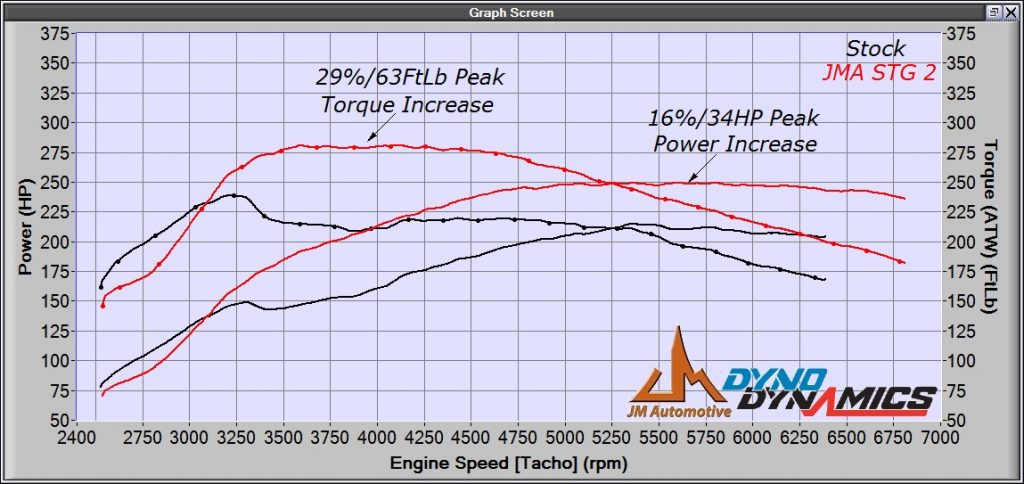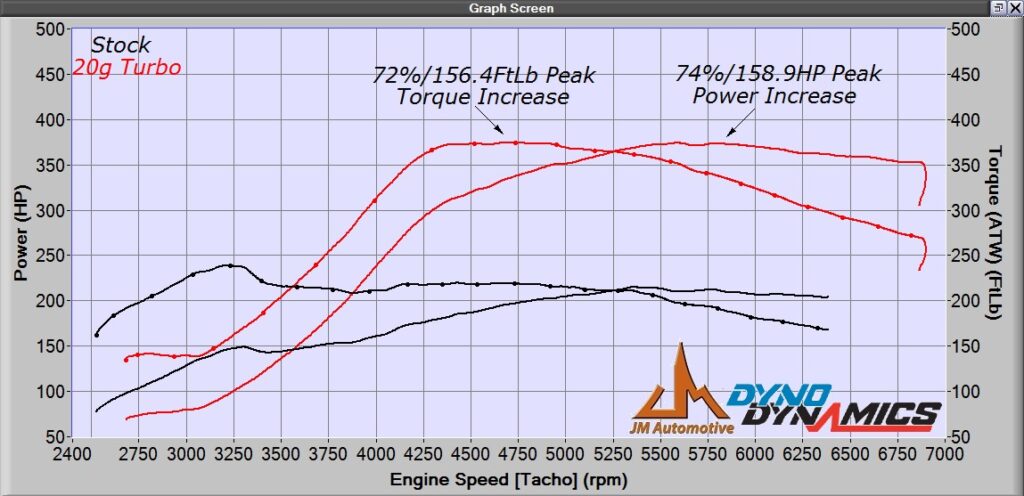These are the typical results you can expect when modifying your 2004-2021 STI. You can expect very similar results on 2010-2014 WRX, 2006-2008 WRX with a VF48/VF52 turbo, and any Legacy GT/Outback XT/Forester XT with a VF48/VF52.
This was a completely stock EJ25 STI and we did 3 stages of modifications from stock and kept track of the results to compare. All of these results are uncorrected numbers which are 20-25% lower than you would expect to see on a Dynojet dyno or our “Shootout” numbers. For more information on comparing dyno numbers check out our dyno page.
Our starting point was completely stock. With no tuning, no modifications, and with 91 octane fuel.
This vehicle made 214.9 HP and 218 FtLb TQ on our Dyno at 15psi. The factory rates these cars at 305 HP and 290 FtLb TQ at the crank.
Below you find the information of our findings along with dyno graphs for comparison. If you have any questions about building your 2015+ WRX STI, give us a call (763) 316-5882.






